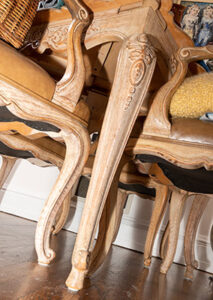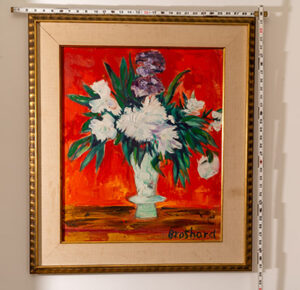I received FOUR questions from FOUR clients:
 How do I furnish a home on a budget in this market, when I spent ALL my funds on the house itself?
How do I furnish a home on a budget in this market, when I spent ALL my funds on the house itself?- I’m an artist and maker. I find old fun objects and rework them for Christmas, but usually I find too much! Any thoughts?
- My partner thinks he’s frugal when he fixes broken-down stuff. How do I convince him he’s wasting his time?
- Help! I fell in love with a pricey painting at X Gallery? Is it WORTH it? (for that one, I reflect on the dual meanings of value, see below).
When discussing their questions I gave each client a quiz centering on solutions
 You JUST bought a second house; you have put almost all your savings into that house. But you’ve got to furnish it, at least with a few things to get your started. What do you do?
You JUST bought a second house; you have put almost all your savings into that house. But you’ve got to furnish it, at least with a few things to get your started. What do you do?
- Go online and see what’s “out there”
- Send email to friends asking for objects they don’t need
- Ask your realtor if anyone she’s working with has used furniture
- Start shopping CraigsList type sellers and thrift stores
- Freeze your credit card
- Start making a wish list to ‘go back’ to objects you targeted online
Let’s take the first example, the online furnishing of a second house. Photos and marketing of objects online is seductive, and once you buy you feel immediate gratification. Realizing ‘sweet gratification’ is fleeting; indeed my smartest clients who don’t usually make those impulse buys, make a list of objects they want or have seen, and then go back to review. A ‘wish list’ helps curb impulse buys and also makes the decision process more considered. Sellers do not like ‘wish lists’ because when a buyer reconsiders, the odds of the sale drop significantly.
This of course doesn’t apply to thrift stores! And by the way, I learned that large realty companies often have an online platform for the furniture clients leave behind. But the wish list makes the buying decision a two-pronged consideration so you spend LESS money and make FEWER mistakes!
Recreating Found Objects
 You, a craft/maker/artist type, have a large family, and they all say they love your custom-made art and unique objects for their houses. In advance of the holidays, you begin to make/acquire objects now. What do you do so you’re not overdoing it?
You, a craft/maker/artist type, have a large family, and they all say they love your custom-made art and unique objects for their houses. In advance of the holidays, you begin to make/acquire objects now. What do you do so you’re not overdoing it?
- Make a list of what you have found/made and post on fridge
- Create a list of who gets what and stop when the list is done
- Clean out a section of a closet or garage and create a designated space for the objects you make
In this case, experts say the ACTUAL SIGHT of the objects in one place will help you to ‘curate’ your objects. The other part of this story is – will your son-in-law WANT what you have MADE!
Your partner loves to repair used machinery and electronics
His philosophy is he’s saving money. As you watch, he spends hours; you remind him that at his REAL job he makes $xxx an hour! What do you think, but do not say out loud to him?
- For the time you’re spending, we could buy it new
- YOU are a compulsive saver, as opposed to a compulsive spender, and both are hard to live with
- Tinkering is good for you and keeps you out of my hair
The “healthy” answer to this one is that objects DO reflect our personality and what your partner LOVES will not be what YOU love. I’ve found, in 30 years of appraising, that, in a partnership such as a marriage, I find ONE person that LOVES STUFF and one who HATES stuff. One side of the garage for example is organized and the other side is total chaos. Yes, everyone has experienced running out of patience with the OTHER PERSON’S STUFF. But I wager that frugality isn’t why your partner fixes things. He identifies with those objects.
VALUE and WORTH of an OBJECT
 You, a frugal person, fell in love with a painting you saw at a high end gallery. You know the painting won’t bankrupt you, but you know how guilty you’ll feel if you buy it. What do you do?
You, a frugal person, fell in love with a painting you saw at a high end gallery. You know the painting won’t bankrupt you, but you know how guilty you’ll feel if you buy it. What do you do?
- Realize that because you trained yourself to be a ‘saver,’ you can’t convince yourself to buy
- KNOW you can afford it, and try to focus on your values (beauty, love of fine design, warmth and composition of your home), and try to focus away from the price/value of the artwork, and you still don’t buy
- You realize the work DOES reflect your personality and life values –and you purchase the work
This is a most interesting question, because it deals with the distinction between VALUE and WORTH. What something is WORTH is one thing, how it reflects your VALUES is another thing. The two can be intermixed, but I suggest writing DOWN how the work of art affects you; how that work makes you FEEL. Can you put a dollar figure on that? You can try with this exercise: write down what other OBJECT you might purchase for the amount of money the gallery is asking for the painting. Would a refrigerator which costs the SAME evoke those feelings/values of importance to YOUR life?